Text
A moment for a petty complaint:
When people are explaining how to weave in ends, in a tutorial or any video, and they say to "just follow the path of the yarn" or "double the stitches" and then proceed to do THIS

That's a valid way to weave in your ends, assuming your yarn is wooly enough to not slip and it won't be super visible, but that's simply not what you've described.
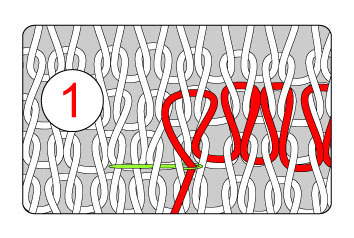
THIS is following the path of the yarn. It is also the superior way to weave in ends securely and least-visibly from both sides.
#i’m going to scream#I have only ever read ‘weave in the ends’#and had to figure out what that means myself#op blessings on you
3K notes
·
View notes
Text
Artists, let’s talk about Instagram commission scammers
There’s been a huge rise in commission scammers recently, mostly on Instagram. A lot of new artists don’t know what to look out for, so I figured this might help people.
How they begin
Usually the scammer will write to you asking about a commission. Something deceptively cute - mostly I encounter asks about pet portraits, with one or two photos sent. They’ll probably try to sell you a sweet little story, like “It’s for my son’s birthday”. They will insist that they love your artwork and style, even though they don’t follow you or never liked a single piece of your art.
What to look out for:
Their profiles will either be private, empty, or filled with very generic stuff, dating at most a few years back.
Their language will be very simple, rushed or downright bad. They might use weird emojis that nobody ever uses. They will probably send impatient “??” when you don’t answer immediately. They’re in a crunch - lots of people to scam, you know.
They’ll give you absolutely no guidelines. No hints on style, contents aside from (usually) the pet and often a name written on the artwork, no theme. Anything you draw will be perfect. Full artistic freedom. In reality they don’t really care for this part.
They’ll offer you a ridiculous amount of money. Usually 100 or 300 USD. They’ll often put in a phrase like “I am willing to compensate you financially” and “I want the best you can draw”, peppered with vague praise. It will most likely sound way too good to be true. That’s because it is.
Where the scam actually happens
If you agree, they will ask you for a payment method. They’ll try to get to this part as soon as possible.
Usually, they’ll insist on PayPal. And not just any PayPal. They’ll always insist on sending you a transfer immediately. None of that PayPal Invoice stuff (although some do have methods for that, too). They’ll really, REALLY want to get your PayPal email address and name for the transfer - that’s what they’re after. If you insist on any other method, they’ll just circle back to the transfer “for easiest method”. If you do provide them with the info, most likely you’ll soon get a scam email. It most likely be a message with a link that will ultimately lead to bleeding you dry. Never, and I mean NEVER click on any emails or links you get from them. It’s like with any other scam emails you can ever get.
A few things can happen here:
They overpay you and ask for the difference to be wired back. Usually it will go to a different account and you’ll never see that money again.
They’ll overpay you “for shipping costs” and ask you to forward the difference to their shipping company. Just like before, you’ll never see that money again.
The actual owner of the account (yes, they most likely use stolen accounts to wire from) will realize there’s been something sketchy going on and request a refund via official channels. Your account will be charged with fees and/or you get in trouble for fraudulent transactions.
You will transfer the money from your PayPal credit to your bank account and they will make a shitstorm when they want their money back, making your life a living hell. They will call you a scammer, a thief, make wild claims, wearing you down and forcing you into wiring money “back” - aka to their final destination account.
Never, EVER wire money to anyone. This is not how it’s supposed to go. Use PayPal Invoice for secure exchanges where the client needs to provide you with their email, not the other way around.
You can find more info on that method HERE.
What to do when you encounter a scammer:
Ask the right questions: inquire about the style, which artwork of yours they like, as much details as you can. They won’t supply you with any good answers.
Don’t let the rush of the exchange, their praise and the promise of insanely good money to get to you. That’s how they operate, that’s how they make you lose vigilance.
Don’t engage them. As soon as you realize it might be a scam, block them. The sense of urgency they create with their rushed exchange, and pressure they put on you will sooner or later get to you and you might do something that you’ll regret later.
Never wire money to anyone. Never give out your personal data. Never provide your email, name, address or credit card info.
Don’t be deceived by receiving a payment, if you somehow agree to go along with it. Just because it’s there now doesn’t mean it can’t be withdrawn.
Here is a very standard example of such an exchange. I realized it’s a scam pretty fast and went along with it, because I wanted good screenshots for you guys, so I tried going very “by the book” with it.
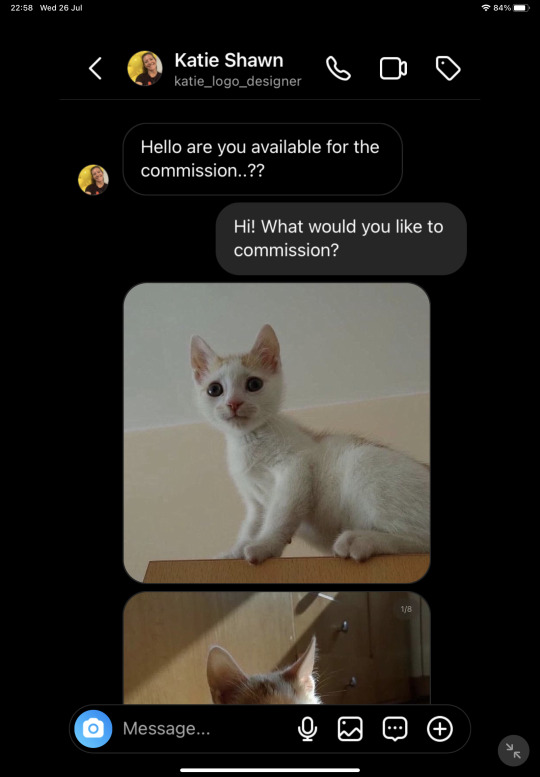






Please share this post, make it reach as many artists as possible. Let young or inexperienced artists know that this is going on. So many people have no idea that this is a thing. Let’s help each other out. If you think I missed any relevant info, do add it as an rb!
Also, if you know other scam methods that you think should be shared, consider rb-ing this post with them below. Having a master post of scam protection would AWESOME to have in the art community.
#this kind of behavior is so low#artists are out here just trying to make a living like everyone else#it’s like scamming the elderly#like can’t y’all use that energy to scam a corporation instead
15K notes
·
View notes
Text




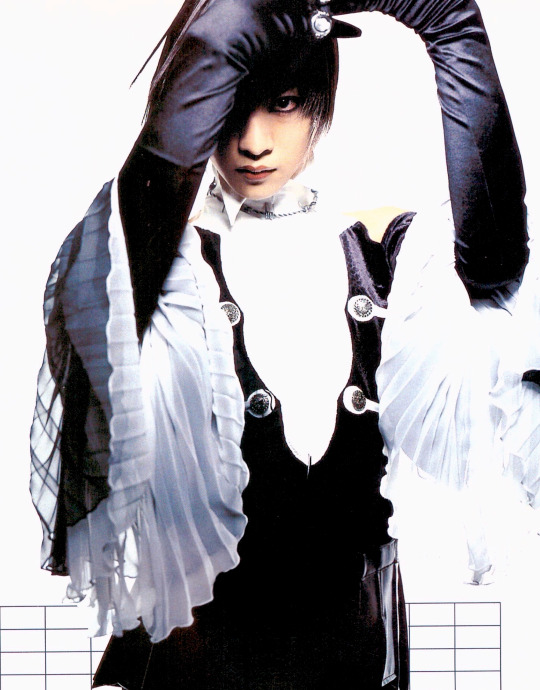


Dir en grey in Vicious, 1998.12
441 notes
·
View notes
Text
⚠️ this blog does not support works created by AI software ⚠️
56K notes
·
View notes
Text
white people please just purchase native artwork and jewelry from native people i keep seeing idiot white people be like “waaah i wish i could support native creators but its cultural appropriation” girl why would beaders sell you their earrings then. just dont get a medicine wheel or a thunderbird then like damn it is that easy
#the stuff I make is mostly for non-ceremonial wear so it’s fine to buy even if you’re not indigenous#loads of sellers make non-ceremonial wear#slap a land back sticker on your laptop and then go work for a grass roots org that advocates for#indigenous peoples and indigenous land stewardship practices to be reintegrated into your local communities#give your friends at brunch the website of the indigenous artists you got your fringe earrings from#go to a general beading class at the local Indian center and make some beaded bracelets for you and your kids#just don’t turn around and sell them#there’s a guy on insta who makes traditional American Indigenous items#like quilled belts and brain tanned leather#this guy is in the Czech Republic#he thinks it’s okay to do because he’s studied our cultures for 25 years#first of all he thinks our culture is homogeneous and he can just pick and choose stuff#he doesn’t realize each Nation or Pueblo has their own thing#and he may or may not be selling the things he makes#but he has US indigenous and First Nations artists following him#he’s probably making money off his insta#THAT is not okay
154K notes
·
View notes
Text
Throughout her translation of the “Odyssey,” Wilson has made small but, it turns out, radical changes to the way many key scenes of the epic are presented — “radical” in that, in 400 years of versions of the poem, no translator has made the kinds of alterations Wilson has, changes that go to truing a text that, as she says, has through translation accumulated distortions that affect the way even scholars who read Greek discuss the original. These changes seem, at each turn, to ask us to appreciate the gravity of the events that are unfolding, the human cost of differences of mind.
The first of these changes is in the very first line. You might be inclined to suppose that, over the course of nearly half a millennium, we must have reached a consensus on the English equivalent for an old Greek word, polytropos. But to consult Wilson’s 60 some predecessors, living and dead, is to find that consensus has been hard to come by…
Of the 60 or so answers to the polytropos question to date, the 36 given above [which I cut because there were a lot] couldn’t be less uniform (the two dozen I omit repeat, with minor variations, earlier solutions); what unites them is that their translators largely ignore the ambiguity built into the word they’re translating. Most opt for straightforward assertions of Odysseus’s nature, descriptions running from the positive (crafty, sagacious, versatile) to the negative (shifty, restless, cunning). Only Norgate (“of many a turn”) and Cook (“of many turns”) preserve the Greek roots as Wilson describes them — poly(“many”), tropos (“turn”) — answers that, if you produced them as a student of classics, much of whose education is spent translating Greek and Latin and being marked correct or incorrect based on your knowledge of the dictionary definitions, would earn you an A. But to the modern English reader who does not know Greek, does “a man of many turns” suggest the doubleness of the original word — a man who is either supremely in control of his life or who has lost control of it? Of the existing translations, it seems to me that none get across to a reader without Greek the open question that, in fact, is the opening question of the “Odyssey,” one embedded in the fifth word in its first line: What sort of man is Odysseus?
“I wanted there to be a sense,” Wilson told me, that “maybe there is something wrong with this guy. You want to have a sense of anxiety about this character, and that there are going to be layers we see unfolded. We don’t quite know what the layers are yet. So I wanted the reader to be told: be on the lookout for a text that’s not going to be interpretively straightforward.”
Here is how Wilson’s “Odyssey” begins. Her fifth word is also her solution to the Greek poem’s fifth word — to polytropos:
Tell me about a complicated man.
Muse, tell me how he wandered and was lost
when he had wrecked the holy town of Troy,
and where he went, and who he met, the pain
he suffered in the storms at sea, and how
he worked to save his life and bring his men
back home. He failed to keep them safe; poor fools,
they ate the Sun God’s cattle, and the god
kept them from home. Now goddess, child of Zeus,
tell the old story for our modern times.
Find the beginning.
When I first read these lines early this summer in The Paris Review, which published an excerpt, I was floored. I’d never read an “Odyssey” that sounded like this. It had such directness, the lines feeling not as if they were being fed into iambic pentameter because of some strategic decision but because the meter was a natural mode for its speaker. The subtle sewing through of the fittingly wavelike W-words in the first half (“wandered … wrecked … where … worked”) and the stormy S-words that knit together the second half, marrying the waves to the storm in which this man will suffer, made the terse injunctions to the muse that frame this prologue to the poem (“Tell me about …” and “Find the beginning”) seem as if they might actually answer the puzzle posed by Homer’s polytropos and Odysseus’s complicated nature.
Complicated: the brilliance of Wilson’s choice is, in part, its seeming straightforwardness. But no less than that of polytropos, the etymology of “complicated” is revealing. From the Latin verb complicare, it means “to fold together.” No, we don’t think of that root when we call someone complicated, but it’s what we mean: that they’re compound, several things folded into one, difficult to unravel, pull apart, understand.
“It feels,” I told Wilson, “with your choice of ‘complicated,’ that you planted a flag.”
“It is a flag,” she said.
“It says, ‘Guess what?’ — ”
“ ‘ — this is different.’ ”
The First Woman to Translate the Odyssey Into English, Wyatt Mason
#listen reading the odyssey is like chewing cud#truly a Sisyphean task#I made the grave error of expecting experience with Ancient Greek plays to prepare me for this#they are 100% NOT the same experience#maybe I’ll try it again with this translation#it’s good and exciting once you get used to the sensation of ‘will this EVER end????’#i was very ‘if dawn rises with her rosey fingers one more time I’m killing myself 🤬’#which is frankly a very Odysseus crew member feeling#that’s probably part of the reason they ate the cattle#to forcibly end the journey with no visible end#it’s an interesting poem it’s just long as hell
34K notes
·
View notes
Text
insane how many people just have these incredible artists in their families who get no recognition outside of crocheting circles because this art form is devalued for its association with women
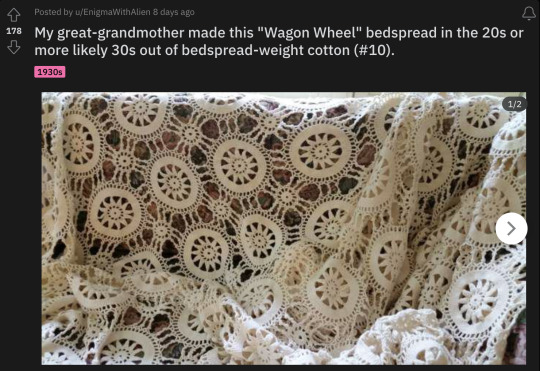


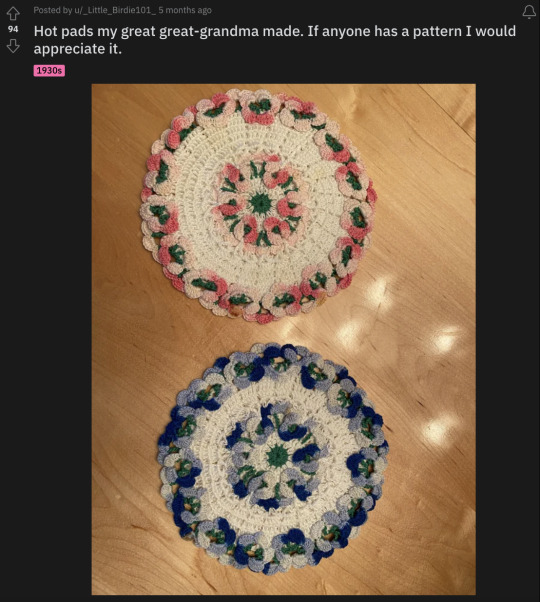
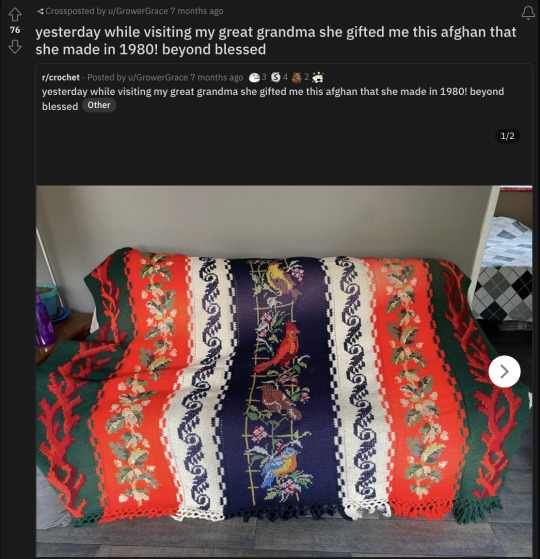

74K notes
·
View notes
Photo
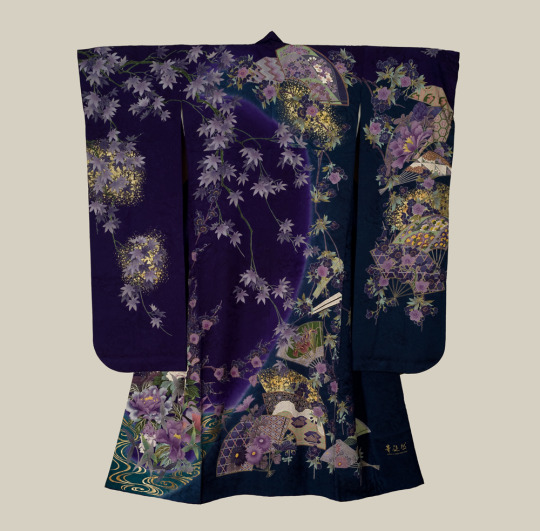
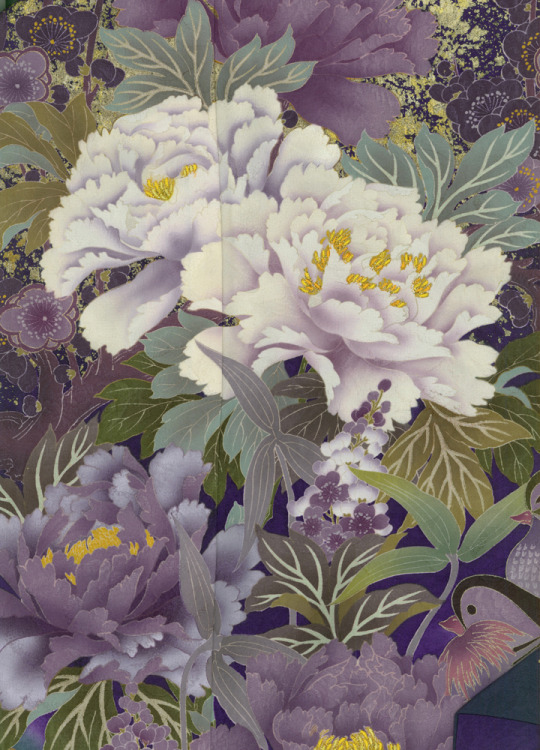

Yuzen-dyed Furisode. Created about the year 2000, Japan. The Kimono Gallery, A large rinzu silk furisode featuring yuzen-dyed (resist-painted) ‘oshidori’ (mandarin duck) on a stream, and classical designs such as fans, 'ume’(plum blossoms) and 'botan’(peony). Gold glaze and embroidery highlights. The rinzu (damask) silk base has woven peony motifs. This kimono was designed by the famous Japanese designer Kansai Yamamoto under his workshop Kansai Super Studio. Kansai Yamamoto was at the height of his career during the 1970’s and 80’s. He is also known for his avant-garde kimono designs, including ones worn by David Bowie in his Ziggy Stardust Tour. This kimono bears the stamp of his studio. The amount of labour and workmanship to create this furisode is remarkable.
#this is beautiful#the way the gold makes it look like there’s lights in the branches#AND the ducks are cute
979 notes
·
View notes
Text

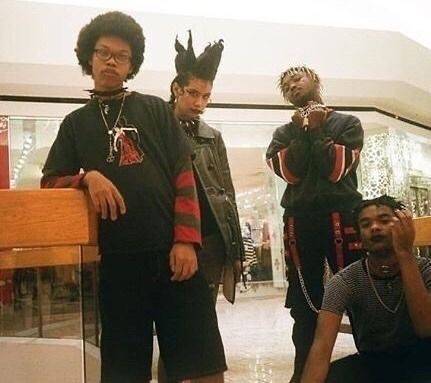






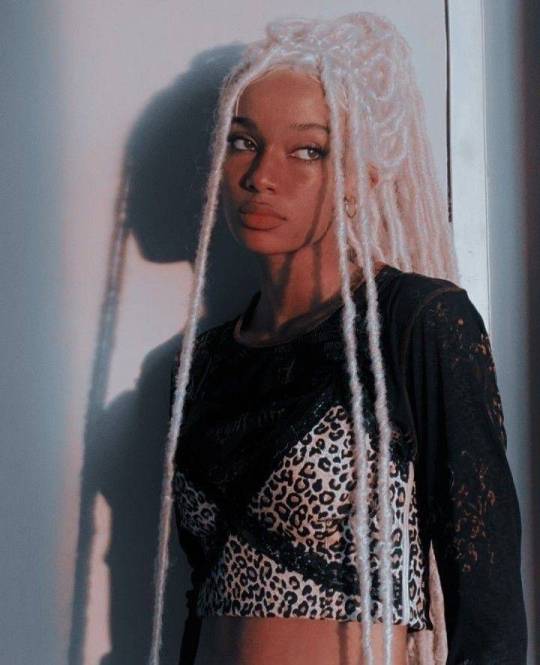
#tbf I make art for alt bipoc#but ESPECIALLY alt Black people#No I will NOT be taking constructive criticism
175 notes
·
View notes
Text
A balance test
14K notes
·
View notes
Text
Hi I’m at A Doll’s House on Broadway starring Jessica Chastain and we don’t start for another 15 mins and Jessica Chastain is just. Rotating. Again let me reiterate we don’t start for 15 mins
#I’m in LOVE with this interpretation#that Nora is stuck in her sphere of influence#caught in the constant machine of meeting everyone’s differing expectations even her own#that she can’t control the speed or direction of her life#that her only choice is to get off the merry go round entirely#having her there for 15 minutes before curtain—but the curtain is already up#puts the audience in the same position#if you’ve never seen/read the play before now you have to wonder#you get dragged into her mental state without even knowing#when will it end? why is this happening? is she doing this herself? has she chosen to stay there?
5K notes
·
View notes
Text
i think the answer to more diverse art and media is not to keep going to fancy schools and forcing our way into these fields i think we just need to steal art supplies and tech and squat in buildings and show our own movies and pieces and concerts and everyone pays what they can and no one is turned down for being broke or bad and we just ignore every honor or award show ever
#going to art school is nice and all#it teaches some technique#but mostly you get how to hobnob 101 and history lessons and How To Survive in Academic Circles#and beyond that it’s just a money funnel for people who already have money#take a couple classes at your local library or art supply instead#and then do whatever you want#get your friends involved or make new ones#make it for self-expression#a normal human experience#instead of Content
18K notes
·
View notes
Text
🎸 Twitter Uruha
"🤜💥🤛 Lv.2
#NAMBAHATCH"
27 notes
·
View notes
Text
art tips
don't call what you create "content". regardless of what it is. that's the devil talking. call it art, call it writing, call it music, call it analysis, call it editing, literally just call it what it is
I was going to put other things but oh my god please just don't call yourself a "content creator". you are a person you are making art / writing / music / etc you are an artist an author a musician
you are not an Image Generator For Clicks And Views. please. allow yourself to connect with your work by naming it properly and acknowledging yourself in kind
#back at it again with Content Creation being the bane of my existence#that term really has watered down every creative practice into thee worst version of The Ad Mill#it’s given us all brain worms so bad that the sneering pall of ‘oh you’re an artist’#that used to permeate every interaction you have with people who don’t think creative jobs are legitimate careers#it’s added additional baggage of seeming old timey#like Content Creators are somehow Fresh and New and Marketable and Authorities in their field#very frustrating#like claiming the actual titles of the work you do is becoming subversive or counterculture#I have A LOT of Feelings about this okay
93K notes
·
View notes
Text
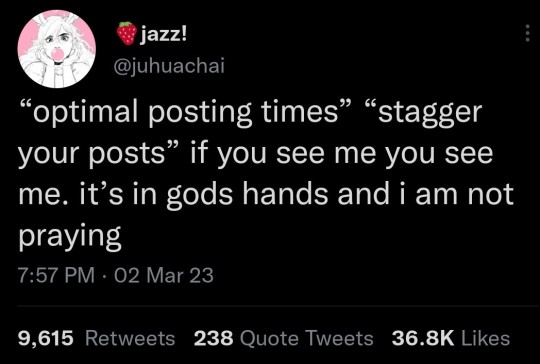
#hah sorry 😅#y’all don’t even want to know what the posting frequency on other sm sites looks like#hint it is also abysmal there#and I’m never going to stop#it extremely unfortunately for my full-time content creator dreams#and subsequently to the detriment of my business sales#I just hate feeling like success mean posting every second of my life 🙄#I’m definitely a huge supporter of living through your own experience WITHOUT the lens of The Device getting in the way
130K notes
·
View notes
Text

#I’m sorry but I DESPISE the leg o’ mutton sleeve on minidress trend#it gives you SUCH a weird silhouette#it’s because of the hemline#a leg o’ mutton sleeve on a body-skimming bodice#with sleek relaxed fit slacks???#and a tallish shoe?#you’re wearing battle armor#your sleeves are so big because there’s secrets in there#you’re making a statement a moment#the minidress sitch? space buns on a qtip#like poorly placed sailor moon twin tails
53K notes
·
View notes
